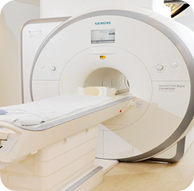CUBRIC is one of the top neuroimaging research centres in the UK and has grown rapidly since it opened in 2006. CUBRIC is expected to become an international hub for neuroimaging, unique in Europe.
This new £44M facility, brings together world-leading expertise in brain mapping with the very latest in brain imaging and brain stimulation, coupled with clinical research facilities to permit clinical trials and scanning of out-patients for state-of-the-art structural, functional, spectroscopic, angiographic, diffusion (DTI) and other multi-purpose studies.
How will MRI systems from Siemens Healthineers aid research at the centre into the causes of neurological and psychiatric conditions such as dementia, schizophrenia and multiple sclerosis?

The vision from CUBRIC is to understand brain and behaviour in health and disease through advanced imaging and cognitive methods.
The improved sensitivity and diffusion-resolution provided, by way of example with the Siemens CONNECTOM microstructure MRI are rapidly enabling human applications in techniques that were previously possible only for in vitro and animal models on small-bore scanners, thereby creating novel opportunities to map the microstructure of the human brain in health and disease.
What level of depth and detail will researchers be able to go down to?
Ultra high field (7T) MRI can support neuroscience and clinical research with ultra-deep insights to view anatomical detail at the submillimetre (micron) scale.
The CONNECTOM system, currently the only one of its kind in Europe, features 300 mT/m gradient coils which are typically 6 times stronger than those found in conventional MR systems.
This advanced technology will allow scientists to study brain cells of 1,000th of a millimetre across.

What other techniques will researchers be using alongside MRI to study the brain at the CUBRIC?
The CONNECTOMm system in the CUBRIC Microstructure lab is also equipped with a field camera for characterisation of the gradient waveforms to correct the acquisition trajectory and an optical tracking system for the realtime measurement and prospective correction of motion.
The Experimental MR lab housing the MAGNETOM Prisma system has concurrent TMS (transcranial magnetic stimulation) and EEG (Electroencephalography), along with eyetracking for congnitive testing and a variety of stimulus presentation equipment for functional Magnetic Resonance Imaging.
CUBRIC also use magnetoencephalography (MEG) to detect the magnetic fields generated from the electrical activity within the brain.
What impact do you think the CUBRIC will have on the aim to tackle neurological and psychiatric conditions?
The centre will play a pivotal role in the global endeavour to better understand the causes of neurological and psychiatric conditions such as dementia, schizophrenia and multiple sclerosis, so as to yield vital clues for the development of better treatments.
CUBRIC is set to deliver a step change in understanding the human brain through integrated characterization of brain coupling over multiple domains. This will transform understanding of the working brain and guide approaches aimed at remedial action when normal coupling is disturbed
How will Siemens Healthineers be supporting researchers on this journey?
We have a team of dedicated scientists in GB&I successfully supporting the ever growing number of Siemens research partner sites.
Additionally for CUBRIC we took a joint decision to have a Siemens/CUBRIC scientist based full time within the CUBRIC research community to help foster closer collaborative links between CUBRIC and our research and development teams.
What do you think the future holds for neuroimaging and how do Siemens plan to advance MRI technology in this space?
One of the exciting prospects with the types of technologies available to research institutions such as CUBRIC is the opportunity to study the brain as a system, with the addition of multi modal imaging systems data biobanking and genomics all leading to a future of personalised medicine
Siemens Healthineers is committed to innovation through partnership. We work with our collaboration partners on developing groundbreaking techniques that make the difference in clinical diagnosis and treatment enabling us to gain a better understanding of disease.
This comprehensive approach is an integral part of our innovation strategy and a key element of Siemens being a leading Solutions provider.
To pioneer any field, one has to be willing to enter unknown territory. Innovation is part of our DNA, both in hardware and software; we continue to set the trends in Neuroimaging.
Where can readers find more information?
About Dr Craig Buckley, Head of Research and Collaboration at Siemens Healthcare

Craig Buckley has held previous posts in academia, and in industry. Over the last 12 years this has been with Siemens Healthineers in engineering, management and various scientific roles supporting Siemens clinical and research sites in Great Britain and Ireland, focussing on industrial partnerships with academia.
He has advisory board memberships for the EU ITN Advanced Brain Computations Imaging Training Network and Oxford-Nottingham EPSRC-MRC Centre for Doctoral Training in Biomedical Imaging, PhD co supervision for the Scottish SINAPSE network, project lead for a multi modality imaging Technology Strategy Board funded research programme and a reviewer for the MRC Confidence in Concept panel for the University of Sheffield.